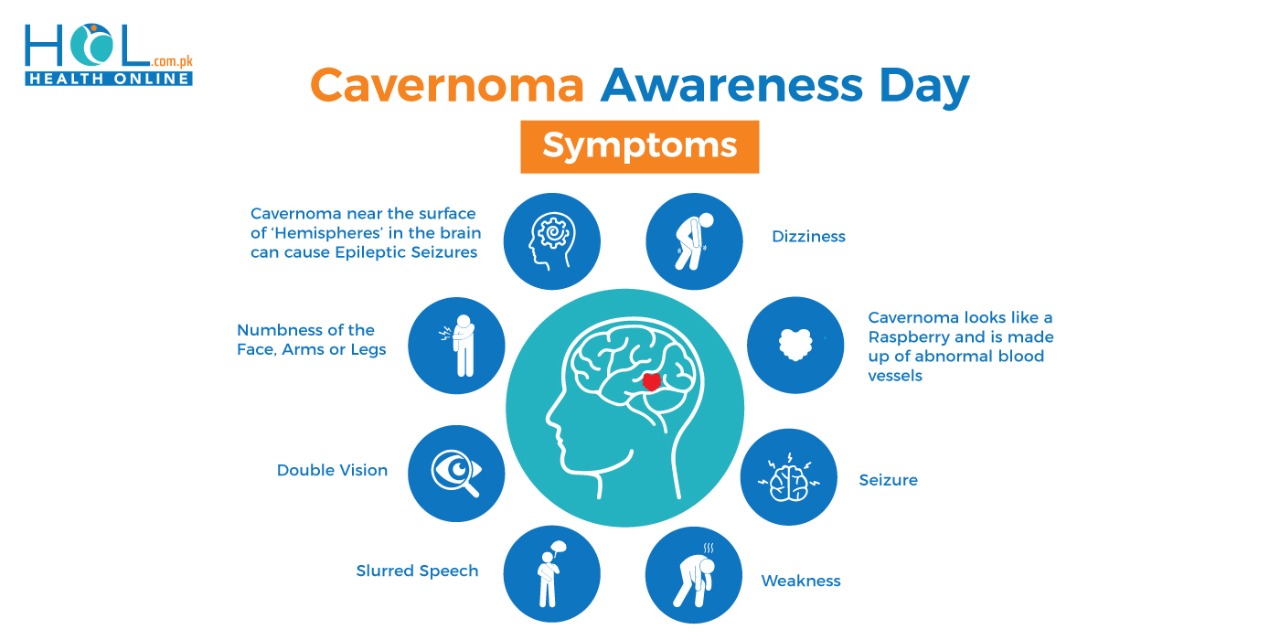Cavernoma is a type of blood vessel malformation. They are composed of small clusters of blood that are filled with globules. They can vary in size from 2mm to several centimeters in diameters. Cavernoma usually occur in the brain, but it may also occur in the spinal cord which is less common.
Cavernoma can develop later in life and so become more common with age. Cavernomas may also be called as
- Cerebral cavernous malformation
- Cavernous angioma
- Cavernous haemangioma
SYMPTOMS OF CAVERNOMA
Cavernoma might be asymptomatic. Obvious symptoms tend to occur when recurrent episodes of bleeding or blood clot formation lead either to seizures.
Other symptoms such as loss of vision, problems with hearing, numbness, weakness, balance or memory problems can occur but which symptoms appear depends very much on the position and location of the cavernoma in the brain.
You should consult a doctor if you experience any symptoms of seizures, or signs and symptoms that suggest brain hemorrhage, such as
- Severe headache
- Nausea
- Vomiting
- Numbness on one side of the body
- Difficulty in speech
- Loss of vision
- Double vision
- Difficulty in balancing
DIAGNOSIS
MRI Scans are mainly used to diagnose cavernomas.
A CT Scan or Angiography can also be used to diagnose cavernoma, but they are not reliable as an MRI scan.
Genetic testing is helpful to identify changes associated with CCMs in genes or chromosomes only if you have a family history of the condition.
TREATMENT
Treatment may include:
-
Observation
If you’re not experiencing symptoms, your doctor may initially decide to monitor your cavernous malformation, especially since risk is generally lower for those who are non-symptomatic. Sometimes intermittent testing such as magnetic resonance imaging (MRI) is recommended to watch for any changes in the malformation. Let your doctor know right away about any changes in your symptoms.
-
Medications
If you have seizures related to a cavernous malformation, you may be prescribed medications to stop the seizures.
-
Surgery
If you’re experiencing symptoms related to a cavernous malformation that can be reached surgically, your doctor may recommend surgery to remove the malformation.


